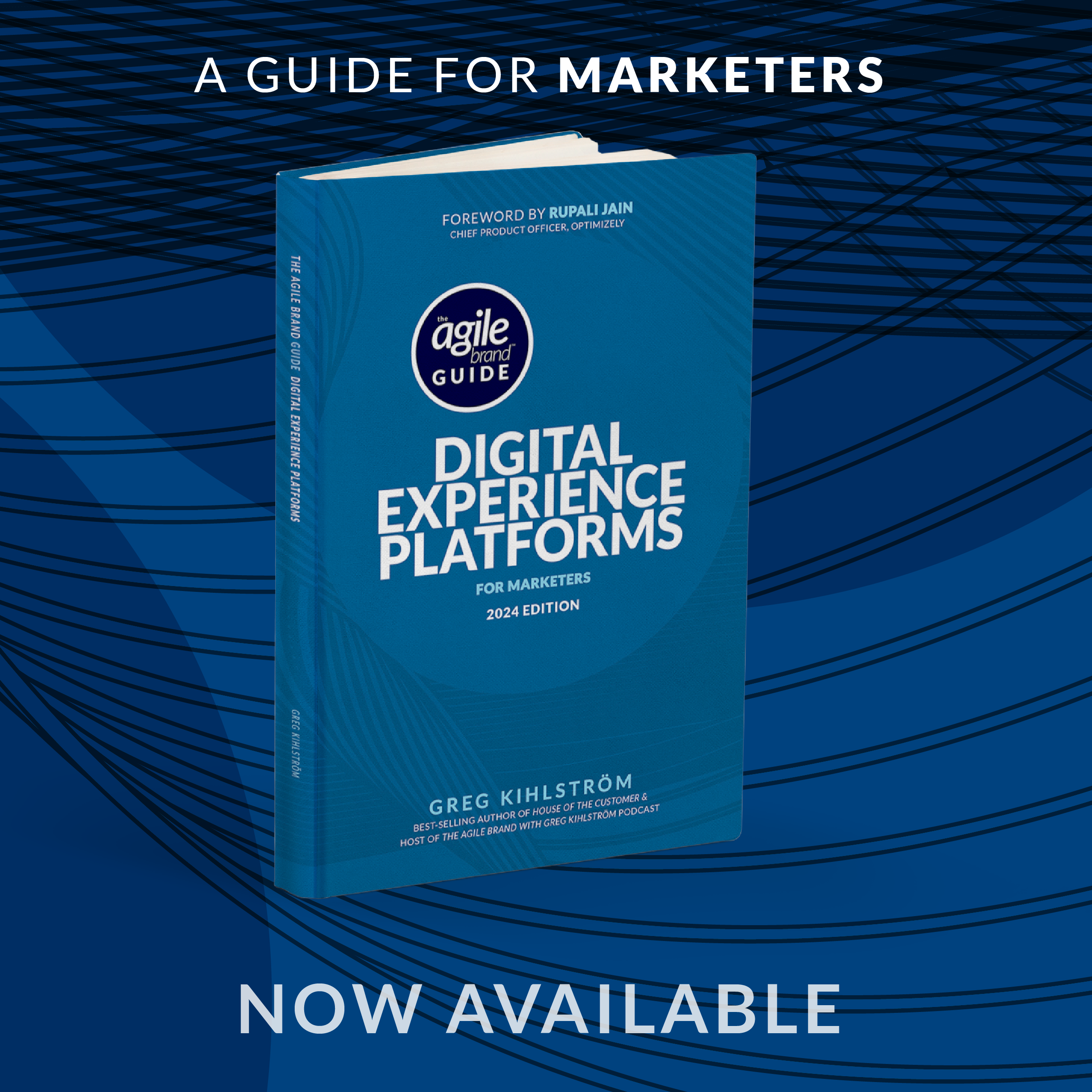This article was based on the interview with Featuring insights from Ken Hughes, consumer behavioralist and “King of Customer Experience” by Greg Kihlström, AI and MarTech keynote speaker for The Agile Brand with Greg Kihlström podcast. Listen to the original episode here:
There’s a new kind of customer out there. They’re not patiently moving through your sales funnel. They’re not marveling at your brand’s latest customer loyalty gimmick. They are the center of their own universe—and they expect your business to orbit around them.
Ken Hughes, consumer behavioralist, speaker, and global CX futurist, calls this the era of the “Blue Dot Consumer.” And in his view, most brands are woefully unprepared. In this fast-moving conversation, Hughes lays out a CX manifesto for the modern age: personalization must be felt, not just promised. Technology must produce emotion, not just data. And the brands that succeed in a future dominated by AI and agent-driven buying? They’ll be the ones bold enough to trade efficiency for intimacy.
From Roadmaps to Real-Time Relevance
The metaphor that anchors Hughes’ philosophy is deceptively simple: the map. Once upon a time, customers had to figure out where they were, where they wanted to go, and which route to take. Brands, in turn, guided them like mapmakers.
Not anymore.
“We used to read the map. Now, we are the map,” Hughes says. “The consumer expects the brand to move with them. They are the blue dot—and your job is to keep up.”for-social-media-conten…
This shift has massive implications. Personalization isn’t just a nice-to-have—it’s the expectation. Contextual relevance, seamless service, and emotionally intelligent engagement aren’t just differentiators—they’re table stakes.
And yet, Hughes warns, most brands still operate as if they’re in control of the journey. They aren’t. The consumer is. Which means we need to build experiences that follow them, not funnel them.
Loyalty Isn’t Points. It’s Emotional Gravity.
Forget punch cards and reward programs. Hughes argues that brands confuse transactional loyalty (buy nine, get one free) with emotional loyalty—the kind that makes customers advocate, forgive, and return.
“If that was dating,” he jokes, “it’d be like saying: ‘Here’s a flower every 10th time I see you.’ That’s not love. That’s math.”for-social-media-conten…
Real loyalty is built through connection. Through moments that surprise, delight, and stick. And perhaps no story embodies this better than the one Hughes tells about Virgin Atlantic: A crying boy at the airport. A forbidden goldfish in a bag. A customer service agent who buys a matching goldfish at the destination airport—and convinces the child that his pet traveled first class. The investment? One fish and a little imagination. The return? A brand story told on stages and podcasts for years.
Hughes calls these “goldfish moments.” And he’s adamant: if you’re not creating goldfish moments in your CX, you’re missing the point of customer experience altogether.
AI Is Here. Now Make It Feel Something.
For all the breathless hype about AI, Hughes brings the conversation back to one essential truth: if your AI isn’t creating feelings, it’s just automation.
He points to Octopus Energy in the UK, which used customer birthdates to select hold music—specifically, the number-one summer hit from when a customer was 14. That one nostalgic song made customers feel seen, even as they waited on hold during a pandemic spike in call volume.
“That’s AI plus humanity,” Hughes says. “It’s not about the tech—it’s about how the tech makes people feel.”for-social-media-conten…
And that emotional calculus is only going to matter more in the coming years. With agentic AI on the rise, consumer decision-making will be outsourced to bots. Need to book a vacation? Your AI agent knows your preferences better than you do. Need to reorder groceries? It’s already done.
The danger? If AI agents become the new customer, brands will no longer be marketing to humans—they’ll be marketing to machines. And unlike people, machines aren’t swayed by brand storytelling or clever UX. They’re swayed by logic, price, and performance.
That’s why emotional branding must be done now. Hughes calls this “owning heart space”—the emotional real estate that a brand occupies in a customer’s mind before a decision is ever made. Because when the agent AI asks which brand to choose, the consumer’s only input might be: “Pick the one I love.”
Tribal Fandom, B2M, and the Taylor Swift Playbook
So how do you build a brand that earns heart space before AI agents make the choice for you?
Hughes points to Taylor Swift—not as a pop star, but as a masterclass in brand loyalty. Swift didn’t just build an audience. She built a tribe. And she did it by investing in connection: personal posts, intimate messages, fan-first decisions, and a consistent, authentic tone that blurred the line between artist and community.
“Her product is music. Her brand is belonging,” Hughes says. “Every person in that stadium thinks Taylor is their friend.”for-social-media-conten…
That’s the lesson for brands. You’re not just selling a product. You’re offering a place to belong. And if you get that right—if you combine intimacy and scale—you win the next era of CX.
Hughes calls it the B2M economy: Business to Machine. And it’s coming faster than most marketers realize.
Conclusion
The future of customer experience isn’t built on dashboards or discounts. It’s built on how your brand makes people feel—now, and when AI becomes the default filter between you and the customer.
As Ken Hughes puts it, “You’re not invited into someone’s life because you got their subject line right. You’re invited in because they feel something when they see your brand.”
So ask yourself:
- Are you designing experiences that move with the blue dot?
- Are you empowering your teams to create goldfish moments?
- Are you investing in emotional loyalty before AI makes your product interchangeable?
If not, the time to start is now.
Because in the race to win the heart—and not just the wallet—the brands that lead won’t be the ones with the biggest budgets.
They’ll be the ones with the boldest empathy.











